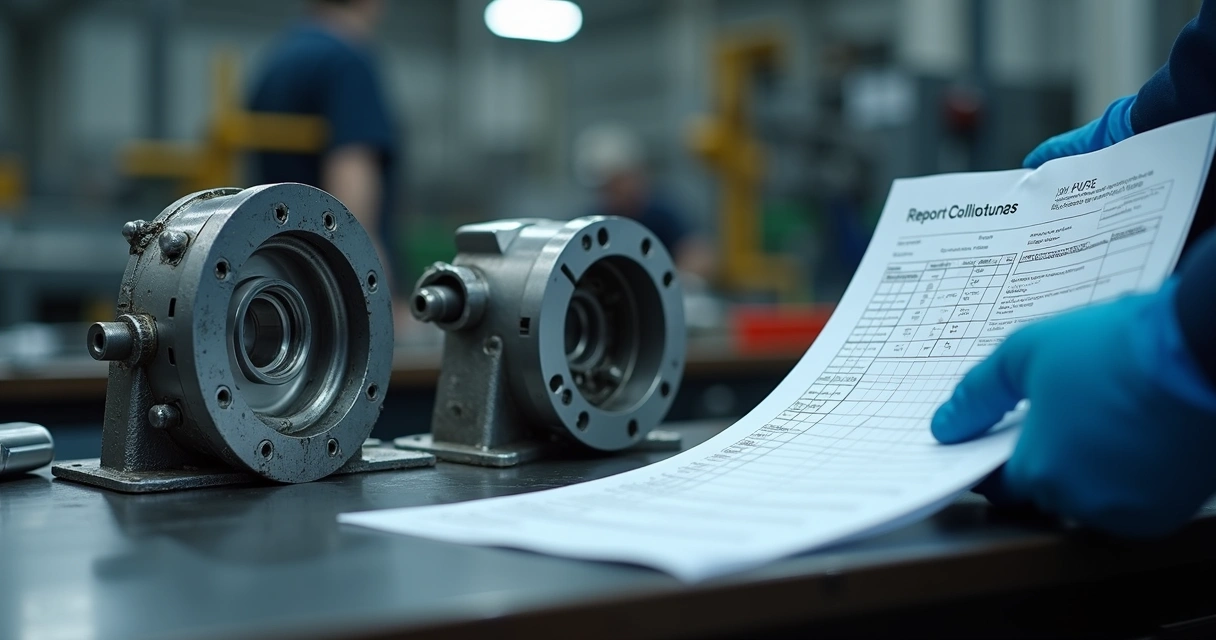Budget Constraints in Maintenance? Here’s How to Adapt

In industrial maintenance, sometimes the budget arrives in a whisper, not a roar. If you’ve felt the tension in a meeting when the words “budget cuts” appear, you aren’t alone. Budgets rarely stretch far enough, and when corners are cut, the risk of missing something important creeps closer.
What follows isn’t a guide for perfection. Real-world maintenance managers work with uncertainty, shifting priorities, and teams as tired as they are determined. This article is practical, rooted in industry wisdom and honest mistakes. Read on for time-tested tactics, subtle shifts, and fresh digital ideas fit for a world where every coin matters.
When budgets tighten: the real-world view from the maintenance floor
Let’s keep it honest. Most maintenance teams don’t start with fat budgets. When a downturn hits, or targets climb higher, even solid plans might get scrapped in favor of “what works now.” What’s harder is making sure “what works now” doesn’t cost more later—maybe in extra downtime or higher safety risks.
If you’re facing these challenges, let’s step through the process together. Imagine a team that’s felt these squeeze points: a small workshop, tired machinery, looming compliance demands, and a leadership group demanding cost reduction without accepting “no” as an answer.
Don’t sacrifice tomorrow to save today.
A wise phrase, but in practice? The temptation to hit the emergency pause on spending is strong, especially under pressure. So, how do you adapt when compromise isn’t optional? Let’s begin with seeing where the money really goes.
Knowing your actual maintenance costs
The first step in any cost-saving journey is to know—not just guess—where the money pours out. Cost visibility sets the stage for solid decisions. But what if your records are partial, or reporting systems are patchy? You start small and build upwards.
- Collect recent invoices, purchase orders, and work orders. Even if your system is manual, getting a three-month snapshot reveals repeat offenders—pumps, conveyors, HVAC units, you name it.
- What does downtime cost you, really? Not just overtime, but lost output, missed deliveries, and emergency callouts.
- Energy bills as a hidden expense. Machines running out of spec can quietly drain your budget through higher electricity or compressed air costs.

To be blunt—most managers are surprised by what they find. Spare parts spending sometimes triples what was expected. Some seemingly small breakdowns cause ripple effects no one traced back before. When you put real numbers on the page, you can actually see expense patterns that were, until then, invisible.
Using digital platforms for visibility
Modern tools like Prelix speed up this process. By letting you collect, tag, and visualize maintenance incidents and costs across teams, these platforms reveal bottlenecks uniquely fast. If you keep deep-diving, you’ll often spot old habits—rushed repairs that trigger rework, or unnecessary overtime shifts that could have been prevented with better planning.
Cost-reduction tactics that work
When you truly understand your costs, the next question is “What can I change, today or next month, that saves money without inviting disaster?” There’s no single answer, but five tactics surface in almost every cost-cutting playbook. Let’s break them down, with a few honest notes on where things might trip you up.
1. energy analysis: finding silent money leaks
According to research on five strategies for cost reduction in manufacturing, energy use is a big, quiet expense. If you haven’t checked the efficiency of your motors, air compressors, or HVAC in the last year, you’re almost certainly losing money.
Energy leaks happen slowly, then suddenly.
- Install plug-in meters or use your building management system to monitor major equipment for spikes or chronic overuse.
- Consider timed shut-offs for non-essential equipment.
- Schedule deep cleaning for cooling fans and vents—dirt and dust can force systems to work harder, quietly driving up your bill each month.
- Ask teams to report abnormal sounds, heat, or vibrations early—the first sign of a coming energy drag.
Savings here can be surprising. Even small changes, like fixing leaking air hoses or switching off conveyor belts during breaks, might rack up significant at the end of the year.
2. spare parts rationalization
The spare parts room is a place of optimism and fear—the hope that you have the right part, the dread of finding out you don’t (or that you’ve got 20 of the wrong item collecting dust).
Researchers at six strategies to reduce costs in field service management found that an organized and right-sized spare parts inventory can cut capital tied up in stock, prevent costly rush orders, and reduce lost time chasing missing parts.
- Inventory audit: Make a list of what’s in stock and when it was last used. Be relentless about weeding out “just in case” items that have sat untouched for years.
- Criticality review: Tag parts as critical, non-critical, or nice-to-have. For low-criticality parts, see if you really need to hold local stock, or if quick delivery is enough.
- Supplier partnerships: Some suppliers can offer consignment stock or vendor-managed inventory, which keeps your cash free without risking long waits.

Some hesitation is understandable—what if the one part you need isn’t there when disaster strikes? Still, keeping stock levels in line with real failure rates is a safer bet than hoping for the best.
3. targeted preventive maintenance (PM)
Too much PM and you burn money. Too little, and unexpected breakdowns pounce. The true trick is in targeting PM for the highest risk and highest cost areas—a lesson confirmed by discussions on cost-effective strategies for reducing maintenance costs.
Not every machine deserves equal attention.
Start by rotating focus toward:
- Machines with the biggest downtime costs.
- Assets with a known “bathtub curve” failure pattern—things that tend to fail at predictable ages or conditions.
- Equipment that’s business-critical (the line stops without it).
Reduce or skip PM on aging, soon-to-retire assets. Your limited manpower is better spent stabilizing the high-value equipment.
4. smarter data, smarter moves: the digital advantage
It might sound a little techy, but platforms like Prelix or any modern CMMS tool can change the game by showing patterns you haven’t noticed. Instead of reacting to each problem as it pops up, these systems let you:
- Spot recurring failures by equipment type, location, or shift
- Generate RCA (root cause analysis) diagrams quickly—see this practical guide for industrial teams
- Automate digital PM checklists and overdue maintenance alerts
If you worry about the learning curve—well, so do most folks at first. But the return is a monthly reduction in surprises. Prelix is especially good at turning raw incident data into quick, actionable recommendations. The graphs and reports also make budget conversations easier with senior management, since the numbers do the arguing for you.
5. training for multi-skilled teams
It’s tempting to squeeze more output from the same people. With smaller teams, multi-skilling isn’t just helpful; it’s a survival tactic. According to performance data analysis in field service management, teams that cross-train sharply reduce both downtime and hiring costs, since fewer specialists are needed on each call.
- Start regular workshops—nothing fancy, just shadowing or sit-down Q&A on specific machine types each month.
- Use downtime for skill swaps—when the line is idle, put technicians together for quick refreshers on unfamiliar equipment.
- Track certifications or completed cross-training using your CMMS or a spreadsheet—it helps prove your case for training budget requests later.

Training is rarely the top line on a budget request, but its impact grows over time. A well-trained technician is less likely to miss red flags or make costly mistakes—an advantage when staff are stretched thin.
Where cost-cutting goes wrong: classic pitfalls to watch
It’s not all bright ideas and easy wins. Hasty cost reductions often have a shadow side. Maintworld warns against common missteps such as swapping out OEM parts for generic bits to save cash in the short term. Yes, the invoice is lower. But all too often, poor-quality replacement parts turn minor repairs into full-blown breakdowns.
- Generic vs. original spare parts: The savings often evaporate when early failures require call-backs and downtime.
- Maintenance deferral: Skipping important PM to save on labor almost always results in larger repair bills and productivity hits later.
- Overworking technicians: Running lean is fine, but when fatigue creeps in, mistakes multiply. And people eventually burn out.

Shortcuts in maintenance rarely stay hidden for long.
These mistakes are easy to make but costly to fix. Sometimes, the headaches come months later, when records don’t match up or root causes can’t be traced. That’s why using a consistent, data-driven approach (see more in preparing RCA with AI in industrial teams) is more than just a trend.
Making the most of digital tools on a shoestring
Many teams think digital tools are the territory of giants with big budgets, but that’s changed. Cloud-based, user-friendly platforms now put powerful diagnosis, tracking, and analytics in the hands of even small workshops. Here’s how you can stretch your dollar and time:
- Automated compliance reports: Digital systems can quickly pull the needed data for audits and regulatory checks, saving hours of overtime and last-minute panic.
- Instant fault diagnosis: Collecting and correlating incident data points toward root causes, letting you act earlier.
- 5 whys analysis: Software-generated diagrams help document the why behind every failure—useful for training and trend spotting over time.
- Integration: The best systems work with your current CMMS or asset database, even if it’s a mix of paper and digital. No need to throw out what already works.
Prelix is an example of a platform designed to make these benefits real for teams squeezed by budget resets. Used well, digital tools pay for themselves by removing blind spots and shrinking the gap between first warning and long-term solution.
Prioritizing: when you can’t do everything
No matter how hard you try, sometimes you can’t fix it all today. Prioritization becomes your main weapon, especially when resources are thin. According to effective maintenance practices in cost-cutting, the following order helps:
- Safety and compliance: Never skimp here. Penalties, injuries, and public image all depend on doing the right thing, every time.
- Business-critical assets: If a breakdown would stop the line or cause major financial loss, act fast—even if the asset isn’t in the worst shape yet.
- High-frequency failure equipment: Recurrent headaches eat away at your manpower. Target these for root cause analysis and rethink your approach.
- Nice-to-have or cosmetic maintenance: Only when time and money are flush.
There’s a gut instinct in this too—sometimes old intuition beats clever formulas, especially when a seasoned technician says, “Trust me, this pump sounds wrong.” Don’t ignore experience, but pair it with real cost and incident data whenever possible.
You don’t have to be perfect. Just better than you were last quarter.
Case-in-point: a true story from a mid-sized factory
Maybe stories help more than theory. A mid-sized manufacturer—a place with 24-hour shifts, regular audits, and machinery approximately the age of its oldest technician—faced a major budget clampdown mid-year. The pressure was on: “Reduce costs by 15% without downtime increases.” Everyone’s favorite mandate, right?
The maintenance manager started by digging deep into part use and overtime logs. It meant late nights and strong coffee, but the pattern was obvious—half the spare parts on the shelf hadn’t moved in three years, and two machines caused 60% of the unplanned line stops.
- Parts consolidation freed up $20,000 in working capital within months.
- Reducing PM frequency on older, non-critical machines meant more attention for two repeat offenders. Both saw a drop in emergencies by 40% after targeted upgrades and training refreshers.
- Teaming with Prelix for better incident tracking uncovered one root cause: an overlooked air leak in a pneumatic system slowly ramped up power bills and cut press accuracy. Fixing it paid back five times the repair cost in six months.
It wasn’t glamorous, but the manager got buy-in by showing results with hard data—something you can do too. The big shift? Focusing on what matters most, and letting go of habits that no longer serve the team or the business.
More resources for learning and improvement
Budget constraints often force learning. For those interested in a deeper knowledge pool, consider checking resources like the Prelix English blog or the Portuguese version. Both deliver practical guides, industry news, and hands-on stories. For teams ramping up their digital journey, guides to AI-based RCA can show you what’s newly possible.

Conclusion: adapt with agility, act with data, and keep moving forward
Budget cuts are uncomfortable. But they can also spark smarter habits, sharper focus, and reliance on data over guesswork. The future of industrial maintenance belongs to those who look beneath the surface, use data to inform decisions, and spend money where it moves the needle—for today and tomorrow.
If you want to see how Prelix helps teams turn limited budgets into lasting results—not only with fast diagnostics but also automated compliance reports and root cause analysis diagrams—maybe now is a good time to take a closer look at what digital maintenance can do for you.
Every month brings new hurdles. But you don’t have to face them alone or unprepared. Try thinking a bit differently, acting a little faster, and choosing the right tools for your unique situation.
Frequently asked questions
What are budget constraints in maintenance?
Budget constraints in maintenance are limits set on how much money a team or organization can spend on maintenance activities, including labor, spare parts, repairs, and planned upkeep. These limits might come from company policy, tough economic conditions, or leadership decisions. The key challenge is that while the available budget may drop, equipment reliability and safety requirements usually stay the same, making it tricky to balance spending and performance.
How to save money on maintenance?
To save money on maintenance, focus on a few proven tactics: Analyze where your current costs go—look for energy leaks, spare part excess, and unplanned downtime. Move toward targeted preventive maintenance so you prioritize high-risk, high-cost assets. Use digital tools like Prelix for better visibility, tracking, and automated reporting. Also, consider multi-skilling your team and forging stronger supplier partnerships for consignment or vendor-managed inventory. It helps to avoid quick fixes like generic replacement parts, as these can drive up costs long-term.
Is it worth it to delay repairs?
Delaying repairs is almost never a true money-saver. Maybe you save cash up front, but studies and industry experience suggest the problem usually gets worse and more expensive to fix later. If delayed repairs affect critical equipment, they can lead to unplanned downtime, lost production, or even safety risks. It’s better to prioritize and address urgent repairs first, even if you need to reschedule less critical tasks.
What are the best low-cost maintenance tips?
Here are some low-cost tips: Regularly audit your spare parts inventory and remove “just-in-case” items. Conduct energy checks for leaking air hoses, unlubricated bearings, or dirty filters that raise operating costs. Use digital checklists and tracking platforms to spot recurring incidents early. Invest time in upskilling your existing team with short, focused workshops during slow periods. And make reporting “small” issues easy—catching a minor fault early is usually far cheaper than waiting for a breakdown.
How can I prioritize maintenance tasks?
You can prioritize maintenance by starting with tasks that relate to safety or compliance—these are non-negotiable. After that, focus on assets with the highest potential business impact (the most expensive or disruptive if they fail). Then, address repetitive failures, as fixing those frees your team to handle larger challenges. Use a blend of data and experienced intuition to fine-tune your list. Digital platforms like Prelix make it easier to rank and schedule by criticality, cost, or frequency, so your team stays focused on what truly matters.
